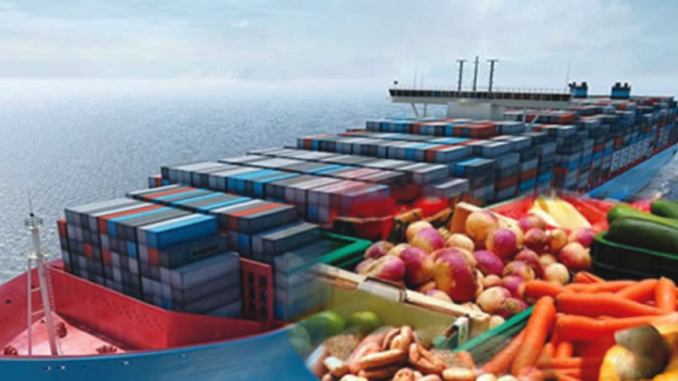
AS Nigeria struggles to reshape its economy, investors were reminded at the close of 2017 of the immense potential offered by the Free Trade Zones. With the licensing of three new FTZs, accompanied by net Foreign Direct Investment inflow of $2.75 billion, attention should be focussed afresh on these specialised trade areas as part of the overall strategy to restructure the economy for job creation, export diversification and industrialisation.
Managing Director of the Nigeria Export Processing Zones Authority, Emmanuel Jime, announced the berthing of Nasco Town FTZ, Quit Aviation Services and Tomato FTZ. These three, he said, had drawn in $2.75 billion and would create 50,000 direct jobs combined. These add to about 31 FTZs already licensed in the country with less than half fully active. The NEPZA lists 21 on its website that are inactive with active ones in Adamawa, Akwa Ibom, Cross River, Jigawa, Kano, Lagos and Ogun states. Earlier in May 2017, Jime had enthused that the Calabar FTZ attracted 11,000 direct and indirect jobs since its inception; facilitated technology transfer and FDI.
Viewed against the background that Calabar FTZ was mooted over three decades ago, the immense human and material potential of Nigeria and our continued reliance on oil and gas exports for 80 per cent of export earnings, it is obvious that the country has not taken full advantage of the opportunities offered by FTZs. This failure becomes stark when it is noted that China kick-started its rapid industrialisation and global export dominance with its own special economic zones. The trade zones have featured in the emergence of Asian and South American economies.
Export processing zones or free trade zones are a special strategy that developing nations are adopting to transform their economies by integrating themselves into the global supply chain. According to the United Nations Conference on Trade and Development, countries in Asia, Africa and Latin America are adopting the tool of FTZs to boost and diversity exports and attract foreign investment. Typically, these are select areas within the country ring-fenced from the rest with incentives such as tax holidays, low or zero import and export tariffs, restrictions on labour unionism and absence of red tape for permits, land and licences. They also leverage natural resources, cheap labour and advantageous infrastructure like airports and seaports. Hong Kong, Gibraltar and Singapore were some of the first FTZs, using their ports as customs-free hubs. Tagged FTZs, Special Economic Zones or EPZs, beginning from the 1930s and gaining momentum from the 1970s, developing nations have increasingly opted for them to transit to the industrial age. A report said that by 2006, 130 countries had established 3,500 EPZs within their borders, employing about 66 million workers. The respected Economist newspaper of London currently puts the number of EPZs at 4,300.
As usual, Nigeria is a late starter, lacking in visionary leadership and the strong political will to see policies through. The concept of EPZs/FTZs has been accepted and codified into law and enabling institutions here. The Nigeria EPZ Act and the Oil and Gas Export Free Zone Act establish NEPZA and OGFTA, while regulations from both and the Central Bank of Nigeria guide operations at the zones. The problem has been full implementation.
President Muhammadu Buhari needs to accord priority to and integrate FTZs into economic transformation plans. As latecomers, Nigeria should learn from the successes of others and avoid their pitfalls.
Take China, for instance, four areas in its Guangdong and Fujian provinces were the first SEZs, beginning in 1980 to open up the closed state-controlled economy and drive its industrialisation. Dubbed a “miracle” by the World Bank, Shenzhen SEZ had by 1992, attracted $4 billion investments, representing 14 per cent of the country’s total FDI, despite initial setbacks. Newer areas dubbed, Economic and Technological Development Zones, have since been built and catapulted the country as the third highest recipient of FDI. Singapore has nine where incentives such as friendly rules, tax holidays, financial stability and excellent infrastructure enabled its ranking as the eighth largest recipient of FDI in 2013.
Nearer home, Kenya’s EPZ Authority is actualising its target of export-led growth and integrating itself into the global supply chain by licensing 40 FTZs that have already provided 40,000 jobs and contributed 10.7 per cent of its total exports. Unlike Nigeria that has failed to take full advantage, 70 per cent of those exports are to the United States under its Africa Growth Opportunity Act.
Again, we remind the federal and state governments that the world is leaving us behind: Buhari and his economic team should accord priority to the FTZs without further delay. What made the difference in the success stories were the political will, policy consistency and giving free rein to the private sector. The FTZs are purely economic activities, not political patronage subject to “federal character” or ethnic balancing. Costa Rica detached its FTZs from mainstream politics and today has over 150 indigenous firms exporting goods to the OECD countries.
To succeed, Nigeria must provide the necessary infrastructure: China and Singapore are models. The World Bank attributes the success of Morocco’s Tangier FTZ, and the 24 in the United Arab Emirates to dogged commitment by their governments to providing world class infrastructure. Many years later, our own government has not delivered on the promised infrastructure at the Calabar EPZ. But by 2008, Egypt’s FTZs employed 136,000 persons and accounted for 20.3 per cent of exports and 9.5 per cent of FDI. Jordan’s seven FTZs have attracted more than 300 companies.
Government should partner foreign investors to provide reliable power – without which production is uncompetitive – at the FTZs, streamline the rules and muster the will to pursue this economic tool with uncommon vigour.
END

Be the first to comment